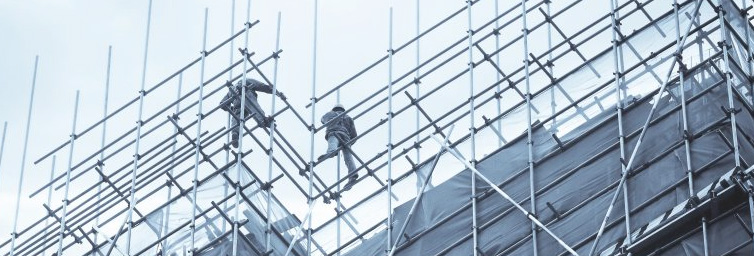What is Scaffolding?
Scaffolding is a temporary structure created to facilitate the construction, repair or maintenance of walls when the work is to be carried out at the height of more than 1.5 m. It may be provided on both sides or only one side of the wall.
The height of the scaffolding is adjusted as the work progresses. Proper care should be taken in scaffolding for outer walls, as the height of a scaffold goes on increasing as the number of storeys increases. The platform should be provided with guardrails, in case there is a chance of a worker falling from a height of more than 2 m.
Parts of Scaffolding
Following are parts of Scaffolding
Standards: These are the vertical posts.
Ledgers: These are horizontal members which are parallel to the wall.
Braces: Diagonal members fixed on standards.
Putlogs: These are horizontal members which are perpendicular to the walls. One end of the putlog is supported by the wall and the other by the ledger.
Transoms: If both ends of putlogs are supported on ledgers, then they are called as transoms.
Bridle: It is a member used to bridge an opening in a wall, which supports one end of the putlog at the opening.
Boarding: The planks on which workers stand.
Toeboard: These boards are placed parallel to the boarding near the wall, to provide protection to the workers.
Guard rail: It is a railing provided at the height of 0.8 - 1.0 m from working platform.
Base plate or sole plate: These are the plates on the ground supporting the standards for distributing the load on the ground.
Scaffolding Types
The following are the different types of scaffolding:
Single Scaffolding:
It is also known as bricklayer’s scaffolding and used in brickwork. Single scaffolding consists of only one row of standards spaced at a distance of about 1.2 m from the wall and in between them is about 2.0 - 2.4 m. The vertical spacing of ledgers is about 1.2 - 1.5 m and spacing of putlogs is 1.2 - 1.5 m. Boardings and guards are also provided.
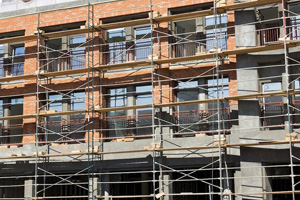
Double Scaffolding:
It is also known as mason's scaffolding and consists of two rows of scaffolding. The first row is at a distance of 200 - 300 mm from the wall and the second is at a distance of 1 m from the first row. It is provided with rakers and bracers. This type of scaffolding is also called an independent scaffolding and is mainly preferred in stone masonry construction, in which it is not possible to leave holes in the wall to receive one end of the putlogs.
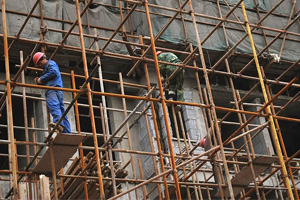
Suspended scaffolding:
In this type of scaffolding, a working platform is suspended from the roof by means of ropes, wires or chairs. The platform can be moved vertically as well as horizontally when required. It is cheap and provides optimum level for work and does not disturb the movement of workers and materials on the ground. This scaffolding is mainly used while painting, whitewashing and distempering of walls.
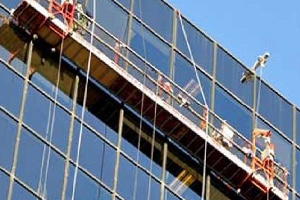
Cantilever scaffolding:
This type of scaffolding is cantilevered from the wall. It is required when the ground is too weak to receive the standards and when the construction is in the upper parts of a multi-storey building. In this type, care should be taken to see that the needle is well strutted and the space at the ground level is required to be free of obstructions.
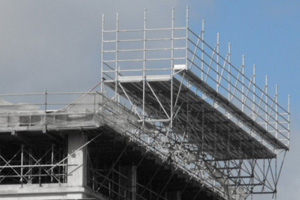
Trestle scaffolding:
It consists of a movable platform, built on tripods, ladders or mounted on wheels. This type is used for maintenance works inside buildings up to a height of 5 m.
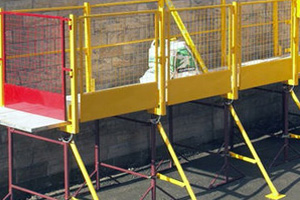
Materials for Scaffolding
Timber is a commonly used material for making scaffolding. For boardings Bamboos and plants are used, and for standards, ledger and putlogs, Casuarinas poles are mainly preferred. Nowadays, steel tubes are replaced with casuarinas poles. Tubes of 40 - 50 mm diameter are ideally suited for scaffoldings and can be easily erected and dismantled.
Also Check: What is Shoring? What are the uses of it in Construction


